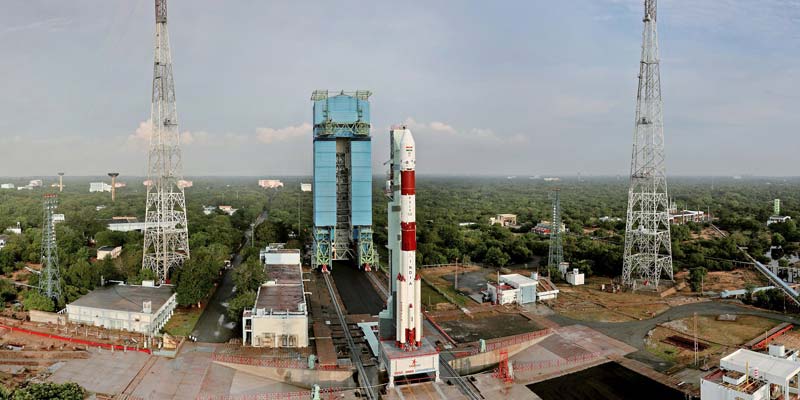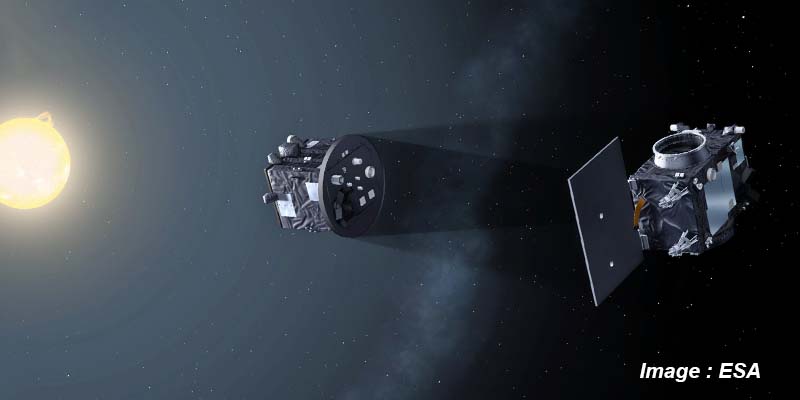- India
- Dec 05
Explainer - ESA’s Proba-3 mission
• ISRO’s Polar Satellite Launch Vehicle (PSLV-C59) rocket carrying two satellites of the European Space Agency (ESA), lifted off from the spaceport in Sriharikota on December 5.
• The launch was re-scheduled to 4:04 pm and a revised countdown was set after sorting out an anomaly detected in the propulsion system of one of the satellites on December 4, minutes before the launch.
• As the countdown concluded, the PSLV C-59 blasted off to place Proba-3 spacecraft in the desired orbit.
• Proba-3 consists of two satellites in which two spacecraft would fly together as one, maintaining precise formation down to a single millimetre to study the Corona, the Sun’s outer atmosphere.
• NewSpace India Ltd, the commercial arm of ISRO has bagged the order from the ESA for the launch.
• The 44.5 metre tall polar satellite launch vehicle blasted off majestically from the first launch pad.
• Proba-3 will function as an orbital laboratory, demonstrating acquisition, rendezvous, proximity operations and formation flying, while validating innovative metrology sensors and control algorithms, opening up novel methods of mission control.
• ISRO had successfully launched the Proba-1 rocket by the European Space Agency in 2001.
Formation flying mission
• Proba-3 is devoted to the demonstration of technologies and techniques for highly-precise satellite formation flying.
• It consists of two small satellites launched together that will separate apart to fly in tandem, to prepare for future multi-satellite missions flying as one virtual structure.
• The two satellites — the Coronagraph spacecraft and the Occulter spacecraft — will maintain formation to a few millimetres and arc second precision at distances of 144 m or more for six hours at a time.
Why are there two satellites?
• For Proba-3, there are two satellites to create the conditions for observation of the Sun corona, synthesizing the equivalent of an extremely large instrument. One satellite features a telescope, kept in the centre of the shadow cast by the other satellite 144 m away, thanks to an occulter disk. Maintaining the correct position in the shadow requires a precise formation flying capability.
• The two satellites will together form a 144-m long solar coronagraph to study the Sun’s faint corona closer to the solar rim than has ever before been achieved.
• In effect the pair will be forming a virtual giant satellite. And this will be achieved autonomously, without relying on guidance from the ground.
• The two small satellites will be launched together into a highly elliptical orbit in a stack configuration.
• After a short preparatory period, the two satellites will be separated and injected into a safe relative tandem orbit. Included in the commissioning period will be a demonstration of the mission’s Collision Avoidance Manoeuvre, ensuring they can be left safely in an orbit with no risk of collision or running away from each other.
• The formation flying will take place on a fully autonomous basis, towards the top of each 60,000 km altitude orbit, where gravitational, atmospheric and magnetic perturbations are minimised. The rest of the time the pair will spend the rest of their orbit in passive safe drifting.
• Normal operations will include both formation flying manoeuvres and scientific observations using a giant solar coronagraph that will block out the blinding light from the solar disk in order to acquire continuous views of the Sun’s corona, or surrounding atmosphere.
• Successfully achieving precise formation flying would enable a whole new era for science and applications. Missions could be flown that are much larger than any single spacecraft – such as giant in-orbit radio and optical interferometry arrays – while precise orbital rendezvous would make in-orbit satellite servicing feasible, extending the lifetime of space infrastructure.
Manorama Yearbook app is now available on Google Play Store and iOS App Store



